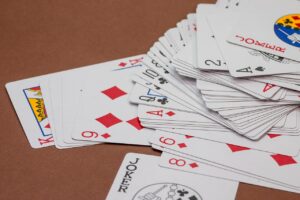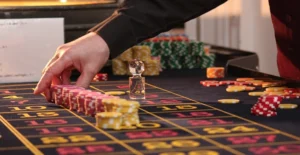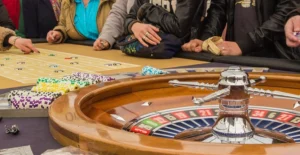Welcome to your ultimate guide on the rules for Crazy Rummy card game. This popular variant of Rummy offers a unique twist with its changing wild cards each round, making for an unpredictable and engaging experience. Whether you’re new to Rummy or looking to master the rules for Crazy Rummy, this guide breaks down everything you need to know to play and win.
What Is Crazy Rummy? Game Overview & Origins
Crazy Rummy is an adaptation of the traditional Rummy card game. It is played in rounds, and the objective is to get rid of all your cards by making a designated combination of cards, called a meld. The twist that makes it “crazy” is that the wild card changes every round, so players must adapt. It is a fairly simple game to learn, but to master it takes a bit of consideration.
Game Objective and Winning Conditions
The objective of the rules for Crazy Rummy is to score the fewest points. You score the fewest points by being the first player to meld all your cards in a round, or by having the fewest points remaining in your hand when another player melds all their cards. The game is played for a predetermined number of crazy rummy rounds, typically thirteen. The player with the lowest total score at the end of the game is the winner. The goal and skill of the rules for Crazy Rummy is to meld all your cards, but to do so with the lowest total number of cards remaining in hand.
Number of Players and Required Decks
Crazy Rummy is usually played with 3 to 6 players. For this number of players, a standard 52-card deck is typically used. Some variations suggest using two decks, especially if you have more players or want a longer game, but for the standard version, one deck is plenty. You’ll also need something to keep score with, like a piece of paper and a pen.
Understanding Melds: Sets and Runs Explained
Melds form the essence of the rules for Crazy Rummy, consisting primarily of two types of groupings: sets and runs. A set consists of three or four cards of the same rank, such as three 7s or four Kings. A run consists of three or more cards of the same suit, such as the 4, 5, and 6 of hearts. Along the way, you may use wild cards to complete these melds, and that is where you’ll find some of the strategy. For example, if 7s are wild, you could use a wild card to stand in for a third 7 to form a set.
Dealing the Cards: Setup and First Turn
First, we need a dealer. The dealer will shuffle the deck and deal a set amount of cards (most often seven) to each player. The rest of the deck will be placed in the centre of the table to create the draw pile. One card will be turned up to start the discard pile. The player to the left of the dealer will usually go first. If that player has melds, they can begin and must then discard one card at the end of their turn.
Wild Cards in Crazy Rummy: How They Work
Wild cards are a great and exciting feature of Crazy Rummy. The wild card will change each round (for example, Aces are wild in the first round, then 2s are wild in the second round, and so on until Kings become wild in the 13th round). Wild cards signify any other card that is necessary to complete a set or a run. Additionally, if multiple wild cards are necessary, you can meld them with a single set or run. It is essential to declare what the card a wild card represents when it is placed on the table, especially if it could lead to confusion.
Replacing Wild Cards with Natural Cards
Another interesting twist to Crazy Rummy is the ability to replace a wild card that is already on the table with a natural card (i.e., the natural card that the wild card represents). If you have a hand of cards that may potentially replace a wild card, it could change your course of play. Say, for example, you have 7s wild and someone has melded a 7♦, 7♣, and a wild card representing the 7♠. If you have the 7♠, you can replace the wild card in their meld with your natural card. The wild card can then be used for a different meld as well. This mechanism allows for an additional strategy similar to how some players approach games such as Eleusis.
Strategy Tips to Win at Crazy Rummy
To do well in the rules for Crazy Rummy, think ahead. Holding onto cards that could form good melds later can be a smart move, as it might block other players. However, be careful not to hold too many high-value cards if you think someone might go out soon, as those could cost you points. Discarding high cards you can’t use is often a good way to lower your potential penalty score. Also, paying attention to what other players are collecting can give you clues about what they might be trying to meld.
Rules for Crazy Rummy Card Game
The main aim of Crazy Rummy is to be the first player to get rid of all your cards in your hand. You do this by successfully putting together valid combinations called melds, and then discarding your leftover cards. Going out first earns that player a win for the round; however, anyone can win Crazy Rummy by having the lowest score after several rounds. Even if you are unable to go out 1st, you simply want to have the lowest point total on any remaining cards in your hand.
The Objective: Emptying Your Hand
Everybody is trying to put all their cards into play by forming melds. A meld, either a set (3 or 4 cards of the same rank) or run (3 or more consecutive cards of the same suit) can be formed. A player has gone out if they have played all their cards in melds, or they discard their last card from their hand and have no cards left in hand.
Winning a Round
A round ends when a player has played their last card, either by merging a card or discarding it. The first player to go out wins the round, although the game will continue for a determined number of rounds, or a player goes out on a predetermined number of points.
Overall Game Victory
While winning individual rounds is satisfying, the true aim is to have the lowest total score at the end of the game. Points are tallied based on the cards remaining in each player’s hand when someone goes out. Therefore, a player might win a round by going out, but if they had many high-value cards left in their hand before that final meld, they could still end up with a high score for that round. It’s a balance between going out quickly and keeping your hand’s point value low. Understanding these rules for Crazy Rummy is the first step to mastering the game.
Number of Players and Required Decks for the Rules for Crazy Rummy Card Game
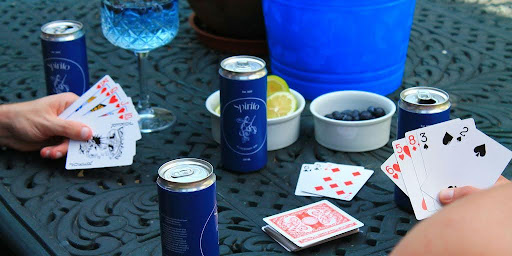
Crazy Rummy is a game that can be enjoyed by a good number of people, making it a good choice for any gathering. Overall, you will see that the game is best for 3-6 players. With this number of players, you can have enough interaction and competition in the game without it getting slow or chaotic.
In most games, you’ll be asked to use a standard 52 card deck. But if you are gonna have more than four players, or you just might want some more variation and possible longer games, other games vary the amount of decks and say a double deck (104 cards) could also be used. When it comes to double decks or variations, you could have an advantage in trying to not run out of cards, and possible added fun.
In summary:
Standard play: 3-6 players and a 52 deck of cards
Larger groups/Variation levels: 4 or more players, and a suggested two(52 decks) of cards, or 104 total cards.
So, before starting a game, it can be a good idea to check with everyone you are playing with what deck you will use or how many decks or variations of cards will be in the game. That will make sure everyone is ready to have fun or at least all on the same page!
It’s always a good idea to confirm with your fellow players before starting which setup you’ll be using, especially regarding the number of decks. This ensures everyone is on the same page and ready to play. You can find more details on the basic setup and rules on pages likeRules for Crazy Rummy Card Game.
Card Values and Scoring System in Crazy Rummy
In Crazy Rummy, the method of scoring cards is fairly simple and vital to understanding how your play is going. The goal of Crazy Rummy is to be able to have the lowest score possible, and you don’t want to have cards stuck in your possession when an opponent goes out. At the conclusion of a round, points on any cards in your hand will be counted against you as penalty points.
The point system is there to penalise a player who didn’t meld out all of their cards.
Here’s how the card values break out:
Face Cards (King, Queen, Jack): These cards are worth 10 points.
Number Cards (2 through 10): These cards are worth their face value. So a 2 is worth 2 points, a 7 is worth 7 points, etc.
Ace: An Ace is worth 1 point.
Wild Cards: As you can see, a wild card just piled it on them in terms of points if you get called out with those, they are for 25 points each!
In this game, it should be noted that some groups will vary in the point amount for wild cards or face cards, and it will be wise to verify the points prior to starting the game. This scoring system is pretty standard, though, and it’s a good way to keep the game competitive. Remember, the player who goes out gets zero points for that round, which is why getting rid of your cards is so important. You can find more about howRummy and Gin Rummy differ in their scoring and general play.
Understanding Melds
The primary action in Crazy Rummy involves making special combinations of cards referred to as “melds.” Forming melds is how you on cards and win the hand. You will use two main melds: sets and runs.
Sets
A set is made when you have 3 or 4 cards of identical rank. For example, having three 7s (7 of hearts, 7 of diamonds, 7 of clubs) or four Queens (Queen of spades, Queen of hearts, Queen of clubs, Queen of diamonds) would be a set. A set can not contain more than four cards, since there are only four suits in a deck.
Runs
A run is made when you have three or more cards of consecutive ranks, all in the same suit. An example of a run would be the 8, 9, and 10 of spades. An important item to note is that Aces are low in Crazy Rummy, meaning that it can “start” a run, such as Ace-2-3 of clubs, but you cannot “bridge gaps”, so King-Ace-2 of hearts is not counted as a run.
Wild Cards in Melds
Wild cards, which will change with each deal, play an important role as melds are formed. Wild cards can be used to substitute for any needed card to complete a set or a run. For example, during the deal where 5s are wild, you have two 5s and a 7 of hearts. You can meld those cards for a set of three 7s using the two wild 5 cards. Wild cards can also be used in a run, representing any card position in the run. When you meld, you will clearly note what the wild card represents if any ambiguity exists. For example, you have a 5, a 6 and a wild card in a deal where 7s are wild, you could note your meld as a run of 5-6-7 with the wild card in place of the 7. As you can see, this creates a wider array of card combinations.
Adding to Melds
Once a meld is on the table, players can add cards to it during their turn, whether it’s their meld or one started by another player. For example, if a run of 8-9-10 of diamonds is on the table, and you have the Jack of diamonds, you can add it to extend the run. Similarly, if a set of three Kings is on the table, and you have the fourth King, you can add it to complete the set of four. This ability to add to existing melds is a key part of the game’s strategy.
Dealing the Cards for the Rules for Crazy Rummy Card Game
To get the game of Crazy Rummy underway, there are a few simple tasks that you need to accomplish to get everyone set to play. The game starts with shuffling the deck and passing out the cards. Each player usually gets 8 cards.
The Deal
Choosing the Dealer: Any method that is fair and simple can be used to choose the first dealer. A common method is for every player to draw a card from the shuffled deck. The player with the lowest card becomes the dealer first, and players who tie will redraw.
Dealing Cards: The dealer gives 8 cards to every player one at a time. Once all players have 8 cards, the remaining cards are placed facedown in a stack beside the players to be considered a drawing stock.
Starting the Discard Pile: The player to the left of the dealer goes first. This is a player who may meld cards and may discard one card that is not needed face up on an area beside the drawing stocks. This will begin the discard pile.
The First Turn
Once the cards are dealt and the discard pile is initiated, the player to the dealer’s left takes the first turn. This player has the option to meld any valid sets or runs they can form from their initial hand. After melding (or choosing not to), they must discard one card face up onto the discard pile to end their turn. Play then proceeds clockwise to the next player. It’s important to remember that the first meld a player lays down must be a new set of three or four cards, or a run of three or more cards. You can find more details on valid melds in the section about understanding melds.
Gameplay Mechanics Rules for Crazy Rummy Card Game
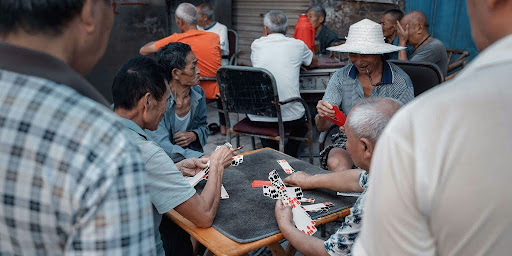
The Flow of Play: Drawing, Melding, and Discarding
Once the cards are dealt and the first player is determined, the game of Crazy Rummy gets into its rhythm. Each turn follows a pretty straightforward pattern, but there are some nuances to keep in mind. The core of your turn involves drawing a card, potentially melding cards from your hand, and then discarding one card to end your turn.
Here’s a breakdown of the mechanics:
Drawing a Card: At the beginning of your turn, you will have two options for drawing a card: the top card from the face-down stockpile or the top card from the face-up discard pile. Your options often reflect your need to complete melds and/or your attempts to prevent your opponents from getting cards they need.
Melding Cards: After you have drawn a card, you will have the opportunity to lay down valid combinations of cards from your hand to the table, or meld. Melding can be sets (three or four cards of the same rank) and runs (three or more cards of the same suit in order). During your turn, you will be allowed to meld as many combinations of cards as you have in your hand. Once you complete your first meld, you can add cards to existing melds on the table, which may be either your cards or other players’ melds. Melding is an important way to get rid of cards from your hand and to use wild cards.
Discarding a Card: You will finish each turn by discarding a card from your hand to the discard pile face up. This card will then become an option for the next player.
Wild Cards in Crazy Rummy
In Crazy Rummy, wild cards are very critical, and they are one of the reasons why the game can be so unpredictable and, well, crazy! Wild cards will be able to stand in for any other card you need to make a set or a run. Wild cards are your get-out-of-jail-free card for melding. The essential thing to stay aware of is that the wild card changes with each round of play. This means that every round you will have a different wild card; you cannot rely on the same suit being wild from game to game or round to round.
What Cards can be Wild?
In Crazy Rummy, the wild card changes from round to round based on card rank. For example, Aces could be wild in the first round, Twos could be wild in the second round, and so forth, all the way down to Kings. It is important to know which card is the wild card in the current round before you start to play.
Using Wild Cards in Melds
Wild cards are notably flexible. They can be utilised to complete a run by bridging a gap in your sequence of hearts (for example: 5♥, 6♥, wild, 8♥) or applied to make sets – especially useful if you find yourself short of an important rank. Similarly, if you really need to, you can even put down multiple wild cards in one meld. If you lay down a wild card during a meld, you must declare which card it is standing in for – this ensures everyone knows for clarity’s sake.
Scoring and Wild Cards
Know that wild cards are usually higher in point values if they are left in your hand at the end of a round. They are certainly a huge asset for melding cards, but holding onto them might get dangerous if you take too long. Some variations of the games might even have a penalty point value assigned to wild cards, which may be higher than the standard card’s points. Be sure to read the specific point values your group uses.
Replacing Wild Cards with Natural Cards for the Rules for Crazy Rummy Card Game
Swapping Wilds for Natural Cards
One of the more interesting mechanics in Crazy Rummy is the ability to swap out a wild card on the table for its natural counterpart from your hand. This is a pretty neat trick that can help you out if you’re stuck. You can only do this after you’ve already laid down at least one meld of your own. It’s a strategic move that lets you reclaim a valuable wild card for your use.
Here’s how it generally works:
- Identify an Opportunity: Look for a wild card that’s part of a meld on the table (either a set or a run) that you can replace with the actual card it represents from your hand.
- Make the Exchange: If you have the natural card, you can take the wild card from the table. You then place the natural card in your hand, and the wild card goes onto the table, effectively taking the place of the natural card.
- Use the Wild Card: The wild card you just picked up can be used immediately in a new meld, added to an existing meld you’ve already played, or kept in your hand for later. It’s your choice!
Winning Rules for Crazy Rummy Card Game andStrategy Tips
Winning at Crazy Rummy involves a blend of careful planning and adapting to the ever-changing wild cards. It’s not just about collecting cards; it’s about outsmarting your opponents and minimising your score.
Strategic Card Retention
In certain situations, it may be appropriate to hold on to a strong combination of cards, especially if a meld is possible with them. This strategy can effectively deny your opponents’ options and make it that much more difficult for them to complete their melds. Just watch your timing, because if you hold on to valuable cards too long before another player goes out, your penalty score will be higher than if you had discarded them. This is especially relevant in larger games, where the game may end very quickly.
Strategic Discarding
An obvious strategy is to discard high cards you can’t use to minimise possible penalty points in case you don’t go out. However, that practice could also assist an opponent going out if they happen to be looking for the same high cards to complete a meld. Think about an opponent discarding any needed cards before discarding.
Utilising Wild Cards Effectively
Wild cards are a big catalyst. An astute play may include laying down a wild card as part of a meld, while keeping a natural card that can later be melded in place of the wild card. For example, with Jacks being a wild card, you could have a meld consisting of a run of cards such as 2♣-3♣-4♣ with a Jack of Diamonds (J♦). You would be able to lay down the J♦ in combination with the 3♣ and 4♣. You could then keep the 2♣ in the event you could get rid of the J♦ after pulling out the 2♣. In this scenario, you secured the meld, and you weren’t left with a wild card if a rival winner won the round. This is a valuable consideration of Crazy Rummy strategy in general.
Patience and Observing
Impatience can lead to poor play. It is very important to maintain your patience and stay focused on the game, even if you do not have a great draw. When a player rushes the game, they are more prone to being poor decision-makers, such as throwing away cards that may help them later or melding too soon. Pay attention to the cards the other players are discarding and to the cards they are melding, as these will help create a picture of what they might have in their own hand, as well as an idea of their own gameplay.
Meld Management
Don’t be too quick to lay down every meld you form. Sometimes, holding a meld, especially one that uses a wild card, can be beneficial. It can block opponents or allow you to swap out the wild card later. However, remember that melds only count once they are on the table, so there’s a balance to strike between holding and melding.
Adapting to Wild Card Changes
Since the wild card changes each round, your strategy must be flexible. A card that was valuable in one round might be useless in the next. Keep track of which cards are wild and adjust your hand-building and melding plans accordingly. This dynamic element is what makes the game ‘crazy’ and requires constant strategic adjustment.
Frequently Asked Questions
What is the main goal of Crazy Rummy?
In Crazy Rummy, the main goal is to get rid of all your cards by making groups called ‘melds.’ You can also win by having the fewest points left in your hand when another player goes out. The game is played over 13 rounds, and a different card is chosen as the ‘wild card’ each round, starting with Aces and going up to Kings.
How many people can play Crazy Rummy, and what do I need?
Crazy Rummy is typically played with 3 to 6 players. You’ll need one standard 52-card deck and something to keep track of scores, like a pen and paper.
What exactly is a ‘meld’ in Crazy Rummy?
A ‘meld’ is a group of cards that follow specific rules. There are two types: ‘sets,’ which are three or four cards of the same number (like three 7s), and ‘runs,’ which are three or more cards of the same suit in a row (like a 4, 5, and 6 of hearts).
How does the wild card work in Crazy Rummy?
The wild card changes every round. In the first round, Aces are wild. Then, 2s are wild in the second round, 3s in the third, and so on, all the way up to Kings in the 13th round. Wild cards can stand in for any other card to help you make a meld.
Can I swap a wild card in a meld with a regular card?
Yes, you can replace a wild card in a meld with the actual card it represents if you have it in your hand. This is a good strategy because it frees up the wild card for you to use elsewhere or to help you go out.
How are points calculated at the end of a round?
When a round ends, players count the points for any cards left in their hands. Wild cards are worth 25 points. Face cards (Jack, Queen, King) are 10 points each. Number cards are worth their face value (a 2 is 2 points, a 10 is 10 points), and Aces are worth 1 point.
Is it better to meld cards right away or hold onto them?
It’s often smart to hold onto good card combinations instead of playing them right away. This can make it harder for other players to form their own melds. However, be careful, as holding onto cards might mean you get stuck with more points if someone else wins the round quickly.
How many rounds are played in Crazy Rummy?
The game consists of 13 crazy rummy rounds in total. Each round features a different wild card, starting with Aces in the first round and progressing through the card ranks up to Kings for the final round. This changing wild card is what makes the game ‘crazy’ and adds a unique challenge.
Daniel Chase is a seasoned casino analyst and iGaming writer with over 10 years of experience in the online gambling industry. He specializes in game strategy, casino odds, and player-focused reviews. Daniel is passionate about helping players make smarter decisions through transparency, real data, and honest insight.

